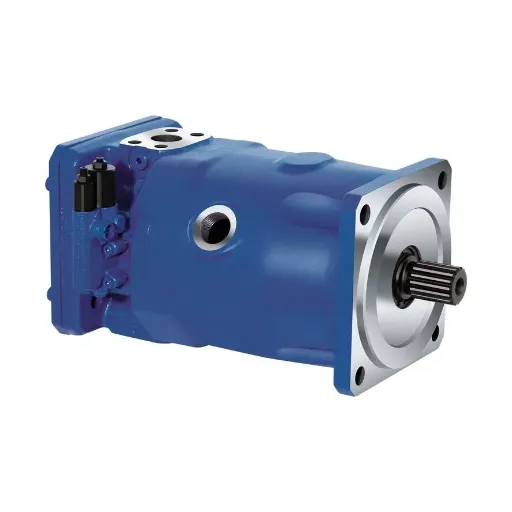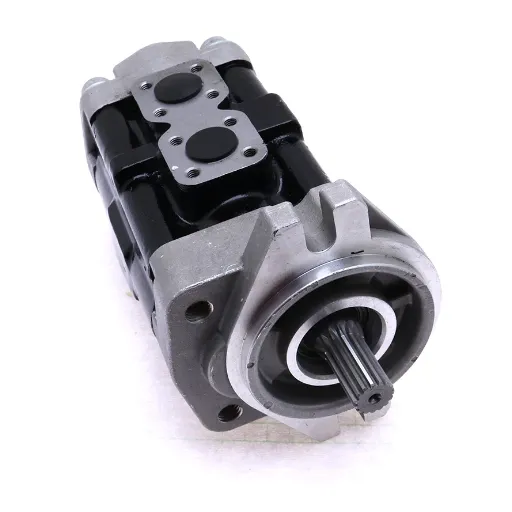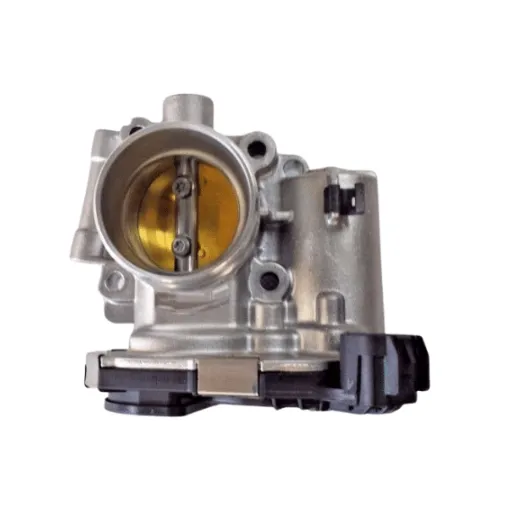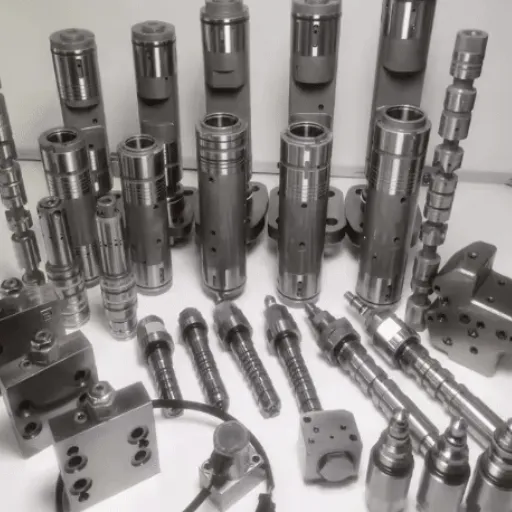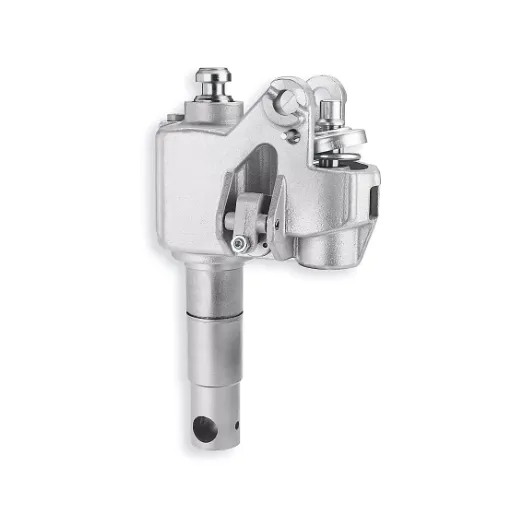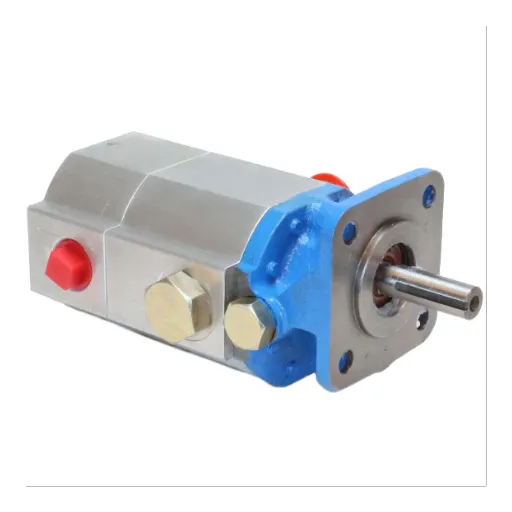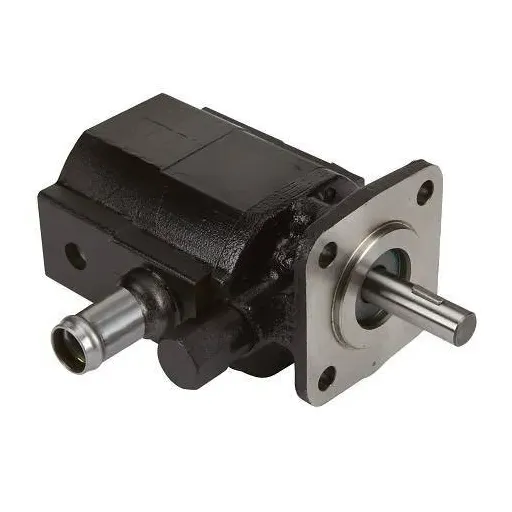Hydraulic systems have encompassed fighting all sorts of industrial and mobile applications, energizing machinery with precision and efficiency. In the center of the hydraulic systems lie the axial piston pumps, which form a vital component. Bosch Rexroth, being a leader in hydraulic technology, has changed the very face of performance and possibilities of these pumps with its state-of-the-art engineering and innovative solutions. This article covers the more advanced buy-side features, benefits, and applications of Bosch-Rexroth axial piston pumps that shed light on how these pumps take the functionality of all industries to a different level. Be it to optimize system performance or just to update on the latest trends in hydraulics, the deep dive will help you understand the reasons behind Bosch-Rexroth continuing to set standards in hydraulic innovation.
Innovative Design and Reliability
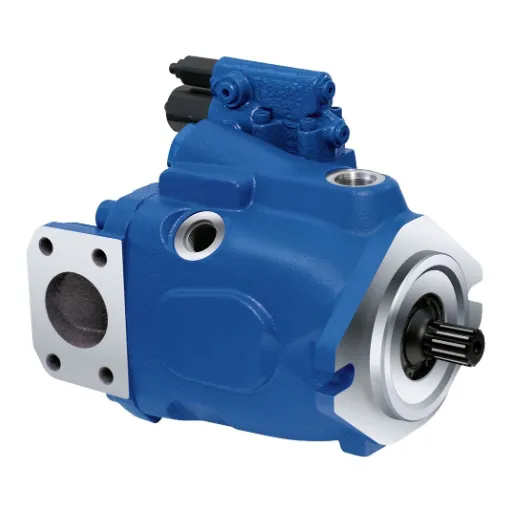
Swashplate Mechanism Explained
The swashplate mechanism is the key component of an axial piston pump that converts rotary motion into reciprocating axial motion of pistons. This mechanism consists of an angled swashplate located inside the pump housing, which controls piston movement as the drive shaft rotates. The interaction between the swashplate and pistons creates a uniform and controllable displacement of hydraulic fluid, an aspect that is vital for precise efficiency in operating the device.
In effect, as the drive shaft rotates, the pistons will move back and forth in their cylinders, owing to the inclined position of the swashplate. In some swashplate mechanisms, this angle can be varied so that the displacement can be altered accordingly; thus, the flow rate of hydraulic fluid can be changed while the system is in use, a feature that has huge applications in machines requiring fine adjustments, such as industrial machinery, mobile hydraulics, and energy-saving systems. The engineering design of the swashplate minimizes friction and wear, giving it higher durability with minimum downtimes under tough conditions.
The axial piston pumps of Bosch Rexroth employ state-of-the-art swashplate technology to ensure that they deliver on reliability and performance. These pumps have been optimized for swashplate inclination and material composition to gain the highest efficiency and service life. Furthermore, the incorporation of stroke control and load sensing allows for energy savings while maintaining operational stability despite load variations. Hence, the swashplate mechanism does assume a key place in meeting some of the very high standards for hydraulic performance demanded today by industrial applications.
Durability and Performance Standards
Durability and performance standards are maintained against hydraulic pumps to ensure that they operate reliably in demanding environments. Those standards are usually established by some industry organizations, such as the International Organization for Standardization or ISO and the National Fluid Power Association. Important considerations are the operational lifespan of the pump, the ability to resist wear and tear while functioning, and adapting to changing conditions such as fluctuating load, high-pressure instances, or the presence of contaminants.
To conform to these standards, manufacturers carry out intense tests on materials and components to establish strength, corrosion resistance, thermal stability, and other such attributes. In doing so, high-grade alloys, perhaps with undercuts, or surface treatments like nitriding and anodizing, may be used to further resist pitting, abrasion, and chemical attack. Besides, the adoption of highly effective fluid filtration systems, coupled with proper lubrication, helps in greatly reducing internal damage due to particulate contamination major cause of pump failure.
Performance validation, on the other hand, subjects these pumps to tests simulating real-world scenarios, verification of response to pressure and flow rate changes, performance to avoid cavitation, and energy efficiency. Whereas the conformance of these pumps with standards ensures the deliveries while reducing downtime and operational costs, the pumps have to be placed to perform for the greater good of industries such as manufacturing, construction, and aerospace.
Energy Efficiency in Hydraulic Applications
Energy efficiency in hydraulic systems is essential for reducing energy consumption, operational costs, and environmental degradation. These systems usually function in conditions that generate great energy losses, mostly for heat generation, fluid friction, and inefficiencies in pump and motor components. By considering these points, industries can increase productivity while meeting sustainability targets.
The most common and accepted ways for energizing hydraulic efficiency are the selection of high-efficiency pumps and motors. For instance, variable displacement pumps can match actual demands placed upon them by the system, thus avoiding any excess fluid being moved and the wasting of energy. In addition, state-of-the-art control systems that adequately control flow and pressure set-points help by not wasting energy during operation. Use of such technologies is reported to have led to energy savings in many industrial application areas, including manufacturing and aerospace.
Maintenance and monitoring feed these applications. Inspections for hydraulic leaks and contamination must be done because performance deterioration leads to inefficient functioning. Also, energy-efficient fluids and heat exchange for temperature control enhance operation. These energy-saving issues would definitely transform into less environmental impact and longer operation time hydro-system with higher reliability: hence, technology upgrade and system management should be equally addressed for achieving energy efficiency.
Applications Across Various Industries
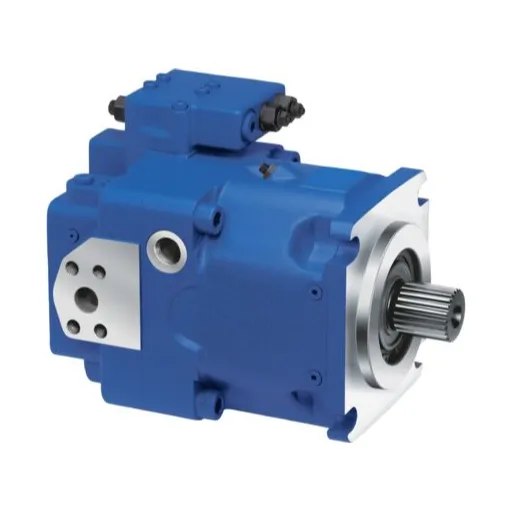
Construction Industry Use Cases
- Excavation and Earthmoving Equipment: With hydraulic systems, excavators and bulldozers carry out heavy, precise operations. The hydraulic arm of a single excavator provides excellent digging abilities and high forces of up to 50,000 psi, which are crucial in large construction projects.
- Cranes and Hoisting Equipment: Cranes use sophisticated hydraulic mechanisms to ensure the stability and accuracy of their movements while keeping heavy loads in suspension. Hydraulic cranes can lift loads of more than 100 tons, helping in placing gigantic components such as steel structures and bridges.
- Concrete Pumping Systems: Hydraulically powered concrete pumps are crucial in concrete placement at construction sites such as high-rise buildings. These pumps are capable of pushing concrete upwards for over 300 meters, allowing for the dispersion of concrete to unreachable locations.
- Paving and Road Construction Machines: Hydrogrammatic systems are used to power important machinery required in asphalt pavers and road rollers. For example, hydraulic road rollers apply compaction forces exceeding 3,000 psi to ensure a durable yet evenly prepared road surface.
- Demolition Equipment: Hydraulic breakers and shears are used for controlled demolition work in urban areas, ensuring precision and safety. With hydraulic pressures above 10,000 psi, these tools can quickly dismantle concrete and metal structures, effectively shortening the project duration.
Marine Engineering Applications
Hydraulic systems account for the operational intricacies of marine engineering, where precision, power, and reliability have to be maintained in the unforgiving oceanic environment. Some prominent applications of hydraulic technology in the marine industry are:
- Steering Gear Systems: The hydraulic mechanisms of the steering gear ensure that the ships and large vessels have a reliable system by producing the required torque to move the rudder. They may operate over 300 bars of pressure, assuring safe maneuvering even against serious sea conditions.
- Anchor Handling and Mooring Systems: Hydraulic winches and cable systems are provided for anchor handling and mooring operations. These systems can generate about 250 tons of pulling forces for the secure anchoring and stabilization of vessels in dynamic marine environments.
- Crane and Load-Handling Systems: Hydraulically powered deck cranes and cargo-handling mechanisms perform the placement and lifting of heavy loads. Capable of lifting 1,000 tons, hydraulic cranes remain an incontestable asset in unloading and loading operations at ports and offshore platforms.
- Submersible and ROV (Remotely Operated Vehicle) Systems: Submersible vehicles and ROVs used for underwater inspection and maintenance operate hydraulically. These systems provide precise control and high power density, giving them the capacity to operate at depths greater than 6,000 meters and in pressure of more than 600 bars.
- Ballast Control Systems: In modern ballast control, hydraulics are involved to operate pumps and valves controlling water levels in ballast tanks. Efficient hydraulic control results in proper vessel stability and trim, which are ultimately important for safety and regulatory requirements in marine transportation.
Hydraulics assures constant improvement in marine engineering by offering concrete and elegant solutions to peculiar problems of the industry.
Agricultural Machinery Integration
Agricultural machinery needs hydraulic systems for precise control, high efficiency, and versatility in many farming applications. Such systems utilize fluid power to do arduous jobs, thus lessening the manual labor and increasing productivity. Below is a composite list of five major uses of hydraulic technology in agricultural machinery:
-
1
Hydraulic Lifting Mechanisms: Hydraulic lifting systems in tractors and loaders facilitate the lifting and lowering of heavy equipment and materials. They provide large lifting capacities that can be varied depending on the needs of precision jobs such as loading hay bales or heavy plow work.
-
2
Hydraulic Steering System: Hydraulic-assisted steering systems are crucial in present-day tractors and harvesters. These systems reduce steering effort on the operator’s part, allowing smoother control, especially when oversized machinery moves over uneven agricultural terrain.
-
3
Hydraulic Brake Systems: Agricultural machinery often operates under changing conditions with heavy loads, requiring effective braking mechanisms. Hydraulic brake systems ensure these operations remain efficient and safe, instantly decelerating machinery if needed, regardless of the weight or opposing conditions.
-
4
Hydraulic Sprayers: Under this system, boom sprayers hydraulically control pressure and flow rates of pesticide or fertilizer for proper spraying. High control assures precise chemical applications, preventing waste and enhancing crop protection efficiency.
-
5
Hydraulic Harvesting Apparatus: Combine harvesters use hydraulic pressure to control the movable parts, like cutting knives, conveyors, and grain tanks. These systems can exert sufficient force to enable handling huge quantities of crops without manual intervention most of the time.
The introduction of hydraulics in farming machinery has brought about faster and efficient working, fewer machine breakdowns, and has gone a long way in the promotion of eco-friendly farming systems. These technologies should continue to serve as defining factors of the agricultural future with continued improvements.
Maintenance Tips for Optimal Performance
Routine Inspections: What to Look For
A periodic inspection is a must to ensure the reliability and longevity of agricultural machinery. Such a procedure can concentrate attention on a few basic points:
🔧 Hydraulic Systems
Check for any leakages, abnormal wear, or damage to the hydraulic hoses and fittings. Also, hydrosystems must have adequate fluid levels and quality to ensure that pressure is maintained while technical contamination could still degrade the system.
🛢️ Engines and Oil Systems
Inspect oil level, viscosity, and filter condition, and judge the performance of the engine while any such procedures are going on. Change filters regularly and operate the engine within temperature recommendations.
⛓️ Belts and Chains
Check tension and alignment of belts and chains in the system. While their ability to transfer power efficiently is important, immediately replace any belts and chains showing the signs of fraying, cracking, or excessive wear.
🔪 Blades and Cutting Edge
Inspect blades and cutting components for dullness, chipping, or uneven wear. Make necessary modifications, either sharpening or replacing, to enable efficient cutting.
⚡ Electrical Systems
Determine the level of battery charging and look over all areas of connection for corrosion or loosening of contact points. Check to be sure that operational lights, sensors, and electrical power sources carry out their task to avoid unnecessary delay.
🔄 Conveyors and Bearings
Assess conveyor belts and rollers for wear or misalignment. Make sure that all bearings are properly lubricated, allowing for smooth rotation to avoid overheating or mechanical failure.
Attending these inspection areas will significantly assist in minimizing unplanned downtime, ensuring longer working life for the machinery in question, and maintaining working consistency in the field. Also, these inspections can be more effortless and insightful for a meaningful plan of maintenance if carried out in conjunction with the manufacturer’s recommendations and modern monitoring technologies.
Best Practices for Longevity
Machinery and equipment require routine maintenance, time-based or condition-based monitoring, and adherence to industrial standards to remain operational for longer. A preventive maintenance schedule should be formulated first, giving lifestyle priority over a reactive approach. Condition monitoring systems, such as vibration analysis and thermography, would highlight early signs of wear and distress, thereby establishing necessary repairs before they become severe.
Lubrication management is another significant issue. Depending on the type of lubrication, its application, and its frequency, the system will either decrease friction or result in premature wear of the component if improper methods are applied. Proper alignment and balancing of moving components are also some factors that can take care of the issue of uniform distribution of stresses so that they don’t result in component wear.
Machine data insights provide a kind of value judgment. IoT devices coupled with machine learning algorithms also equip a team of operators to analyze performance patterns and monitor predictions with greater certainty. Always adhere to certified guidelines, that is, ISO standards pertinent to machinery for operational best practices. By coordinating all these with ever-evolving technology, any enterprise can ensure maximum efficiency, minimum downtime, and prolonged life for its assets.
Benefits of Using Bosch Rexroth Axial Piston Pumps
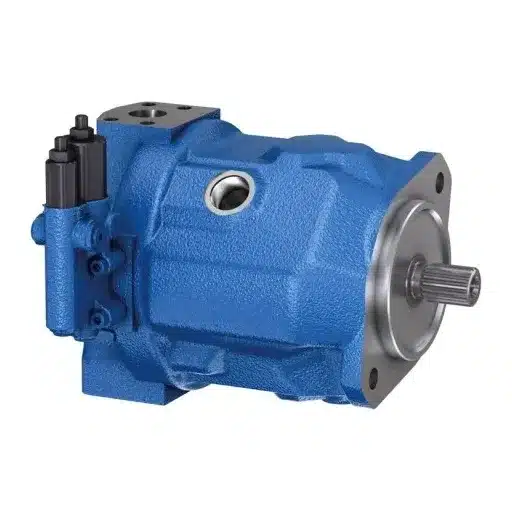
Advantages Over Other Hydraulic Pumps
⚡ High Efficiency
Bosch Rexroth axial piston pumps are designed with the utmost regard for volumetric and mechanical efficiency. Internal leakage and friction losses are minimized to ensure maximum energy utilization, thus bringing down power consumption. Research studies confirm that these pumps can achieve efficiencies of over 90%, thus making them more efficient than many of the conventional hydraulic pumps being sold in the market today.
🔧 Compact and Robust Design
These axial piston pumps from Bosch Rexroth are characterized by a compact build that lends itself to integration into systems that have a very minimal allotted space for them. The tall profile of durableness is retained despite the diminutive size, thus supporting maximum operating pressures up to 350 bars continuously. Such sturdy construction ensures reliability and thus reduces the risk of failure even in demanding operating environments.
🔄 Versatility Across Applications
The pumps are capable of catering to a huge variety of industrial and mobile hydraulic applications, including construction machinery, material-handling equipment, and manufacturing systems. Different configurations (i.e., displacement sizes and control variants) are offered for these pumps to enable them to function optimally in varying industry demands.
🎯 Advanced Control Options
The latest control systems enable the Bosch Rexroth pumps to be controlled with pinpoint precision of pressure and flow. The presence of electronic displacement control (EDC) and load-sensing abilities guarantees adaptability for real-time operational requirements. This fine control leads to reduced wear and enhanced reliability of the entire system.
⏱️ Longer Service Life
Constructed using high-grade materials with modern techniques, these pumps have an extended service life in comparison to conventional pumps. The wear-resistant components, combined with efficient cooling methods, result in the reduced downtime, thereby bringing down maintenance costs, which is a direct cause of higher productivity and lower overall ownership cost.
Impact on System Efficiency and Cost-Effectiveness
The use of modern pump technology can make an integration into the system that somehow enhances efficiencies and reduces operational costs. Detailed are some of the key impacts with supporting details and quantitative benefits:
💡 Increased Energy Efficiency
High-performance pumps minimize energy losses to gain, in some instances, an efficiency of as much as 90%. This translates to energy savings and lower operational costs, roughly 20 to 30 percent, when compared to the so-called standard pumps.
🔧 Decreased Maintenance Cost
The pumps have wear-resistant materials and are precision-engineered to increase the interval of maintenance. It has been found in certain studies that they could potentially reduce maintenance costs by 25% as fewer repairs and replacements are made during the life of the pump.
📈 Longer System Life
Pumps of this type outlast traditional type systems by 50% in their life span, due to major design variations and proper cooling arrangements. Thus, they require less frequent replacement, which leads to less capital expenditure.
⏰ Reduced System Downtime
Due to their increased reliability and durability, failures of these advanced pumps are quite low. This has resulted in downtimes being cut by 40%, which essentially enhances operational uptime and productivity.
💰 Optimization of Operational Cost
Through energy savings, reduced maintenance, and longer life expectancy, TCO is greatly lowered. One case study identified a 35% reduction in the entire operating expenses by switching to these advanced systems.
All these benefits passionately champion high-performance pumps as both the economically and technologically appropriate choice for modern industrial applications.
Advanced Technology Features
High-performance pumps incorporate the latest technology to improve performance, reliability, and operational features. The advanced technology features are as follows:
Smart Sensor Integration
Modern pumps are equipped with smart sensors which offer monitoring capabilities for the flow rate, pressure, temperature, and vibration in real-time. Such sensors enable predictive maintenance, thus avoiding downtime by a certain 30% as per industry reports.
Variable Frequency Drives (VFDs)
VFDs control the motor speed of the pump at very precise points, so it uses energy optimally upon changing demands on the system. In variable load applications, energy consumption can be reduced by 25-50% due to the presence of VFDs.
Advanced Material Coatings
Using corrosion and wear-resistant materials like ceramic coatings or diamond-like carbon (DLC) increases the durability of the components by 40%, making them more durable and less maintenance-intensive.
IoT-Enabled Connectivity
Internet of Things (IoT) connectivity allows remote monitoring and control of pumps via centralized systems. This eases its operation and troubleshooting, which in turn speeds up response and recovery by 20% according to the reports.
Self-Lubricating Systems
Self-lubrication reduces friction in the application of greater power. The process of heat reduction will improve wear, thereby increasing efficiency and component failure rates by some 15-20 per cent.
Such technologies explain breakthroughs that continually underline the performance of pumps to make marked improvements in various operational metrics.
Comparative Analysis with Other Hydraulic Pumps
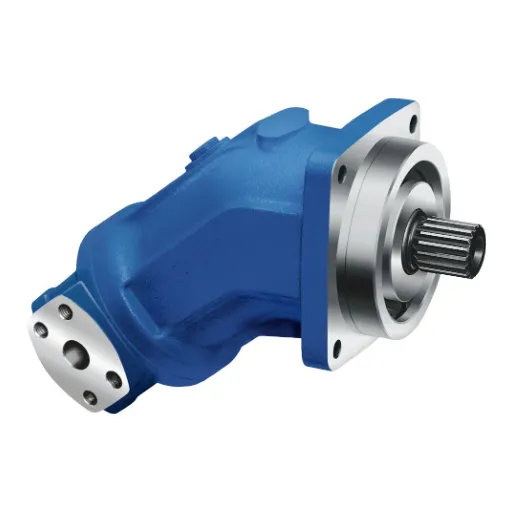
Performance Comparison: Axial vs. Gear Pumps
Axial pumps offer better performance, pressure, and accuracy than gear pumps. Gear pumps, on the other hand, are simple and inexpensive, and are ideal for everything else but high pressure.
| Aspect | Axial Pumps | Gear Pumps |
|---|---|---|
| Performance | Superior | Moderate |
| Pressure Level | High | Low |
| Accuracy | Precise | Basic |
| Affordability | Expensive | Budget-friendly |
| Design | Complex | Simple |
| Usage | Intensive | General |
| Lifespan | Long-lasting | Average |
| Sound | Quiet | Noisy |
| Upkeep | Frequent | Minimal |
| Energy | Efficient | Moderate |
Cost-Effectiveness in Long-Term Use
Several factors come into consideration when weighing the cost-effectiveness of axial versus gear pumps for the long run. These include the initial cost, operational costs, maintenance, and lifespan. Gear pumps are comparatively cheaper upfront because of their less complicated design. However, lower initial costs can be accompanied by higher maintenance charges in the long run and a drop in efficiency owing to wear.
For heavy-duty and high-pressure applications, an axial pump, which is said to be an expensive one upfront, is a very economical choice because of energy efficiency and precise performance that practically minimizes waste and cuts down on power charges over extended periods. Axial pumps, further, last longer and require fewer replacements, which is a major cost saving. Conversely, these pumps do require quite a bit of maintenance, which might push up upkeep costs, but the trustworthiness they deliver generally makes up for it.
In conclusion, axial or gear pumps, as I see it, depend on the type of application and requirements placed upon them. If high performance, precision, and energy efficiency are required, axial pumps are well worth the higher initial price in the long run. For more everyday work where cheap and low-maintenance are priorities, gear pumps may be preferable. The best thing is to analyze the operational requirements weakly against the budget to make a wise and cost-effective decision.
Specific Use Cases and Recommendations
🔧 Axial Pump Applications
The industrial applications of an axial pump are those needing high flow rates and continuous operation. They are usually installed in power plants, large water treatment plants, and irrigation systems where it is important to deal with large volumes of liquid efficiently. Being simple in design and capable of handling fluids at low to medium pressure, it ensures efficient performance. However, their intricate design requires maintenance personnel having considerable expertise.
⚙️ Gear Pump Applications
On the other hand, gear pumps suit those applications requiring continuous load with least maintenance. Gear pumps are being constantly transported in viscous fluids like crude oil, lubricants, or chemicals in the oil and gas industries. Their ruggedness and capacity to handle a high-viscosity medium, along with a compact design, make them ideal for equipment lubrication systems and hydraulic systems. Whereas gear pumps are ill-fitted for applications requiring large volumetric flow rates or energy-efficient execution.
The strategist behind the type of pump can be implemented by integrating a detailed evaluation of the operative priorities versus practical requirements. Further, incorporating analytics and system-monitoring technologies can enhance the performance metric to match present and future needs.
Frequently Asked Questions (FAQ)
Q: What are Bosch Rexroth axial piston pumps?
A: Bosch Rexroth axial piston pumps are hydraulic pumps that convert mechanical energy into hydraulic energy by means of axial pistons. They are efficient and reliable in various hydraulic systems and are used for mobile and stationary applications.
Q: How does an axial piston variable pump function?
A: An axial piston variable pump works with a swashplate, which controls the displacement, hence the flow of hydraulic fluid. The more the angle is increased from a zero-displacement position, the higher the output will be, and it can go back to zero at that particular immobilized state. This provides flexibility to systems operating with it.
Q: What is the range of performance of Bosch Rexroth axial piston pumps?
A: The performance ranges of Bosch Rexroth axial piston pumps vary from model to series. For example, the A10V Series offers a variety of displacement units by choice, which should suit almost any hydraulic application and provide the best performance and efficiency accordingly.
Q: For which applications are Bosch Rexroth axial piston pumps applicable?
A: They are used in industries such as industrial machinery, mobile equipment, and hydraulics that require a trustworthy means of fluid power. Their versatility is what makes them a favorite amongst the good ones.
Q: Can Bosch Rexroth axial piston pumps run in an open circuit system?
A: Yes, Bosch Rexroth axial piston pumps can run in an open circuit hydraulic system. This configuration allows the fluid to flow from the pump directly to the actuator, thus being suitable for applications requiring fluid delivery directly.
Q: What are the advantages of having a variable displacement unit?
A: If it is a variable displacement unit, it allows more control of flow and pressure within the system. This increases the efficiency in finishing the task and decreases power consumption, which presents a better alternative in many applications.
Q: What are the maintenance requirements for Bosch Rexroth axial piston pumps?
A: Regular maintenance includes checking fluid levels, watching for leaks, and keeping the pump’s internal and external parts clean from dirt and debris. This preventative maintenance would increase the pump life as well as ensure that it performs well.
Q: Are Bosch Rexroth axial piston pumps noisy during operation?
A: Noise levels vary according to the model and operating conditions. However, in general, many Bosch Rexroth axial piston pumps are built to operate with minimum noise, ideal in locations where low-noise levels are necessary.



